Đây là một biến thể khác của dạng bài Matching. Ở dạng này, học viên sẽ có một list các câu thiếu mất phần ending và một list các ending phù hợp. Nhiệm vụ của học viên là nối các câu chưa hoàn chỉnh với một ending phù hợp dựa trên nội dung của bài đọc. IELTS Lab sẽ hướng dẫn bạn cách làm dạng bài Matching Sentence Endings trong bài viết sau đây.
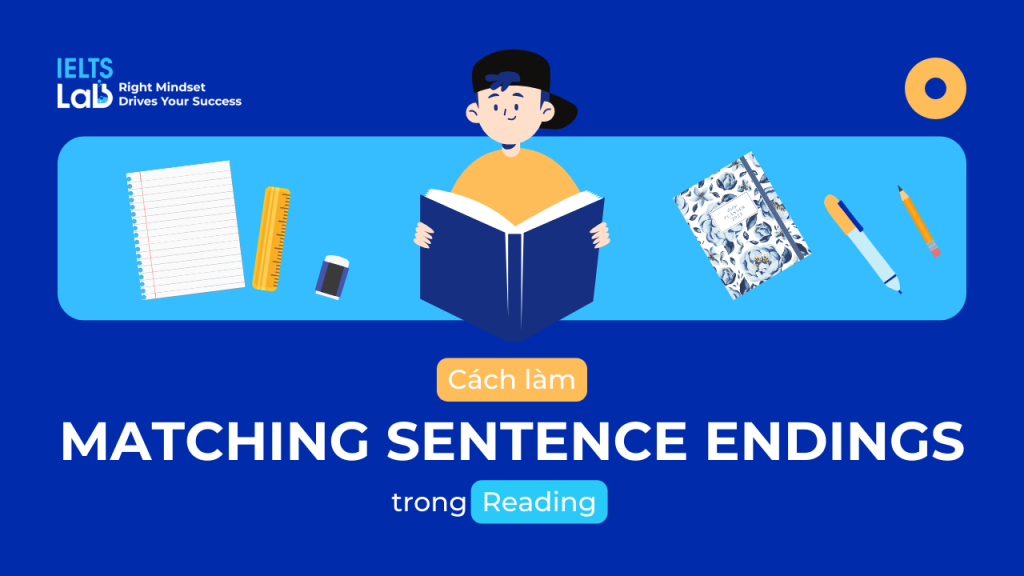
HƯỚNG DẪN CÁCH LÀM
- Bước 1: Đọc vế đầu của câu (đọc câu hỏi), gạch chân từ khóa và thử dự đoán endings phù hợp
- Bước 2: Đọc đoạn văn và tìm các thông tin được nêu trong câu hỏi. Học viên có thể tìm các từ khóa/từ đồng nghĩa với từ khóa trong bài.
- Bước 3: Sử dụng thông tin vừa tìm được để lựa chọn endings phù hợp.
- Bước 4: Làm lần lượt từng câu tới khi trả lời được câu hỏi cuối cùng.
Tips khi làm bài:
- Câu trả lời sẽ đi theo thứ tự của đoạn văn, vì vậy đáp án câu 2 sẽ xuất hiện sau đáp án câu 1 trong bài đọc.
- Học viên nên thử dự đoán vế còn lại của câu trước khi nhìn vào endings.
- Dành nhiều thời gian cho câu hỏi đầu tiên vì ở câu này có nhiều endings để chọn nhất. Ngược lại, câu hỏi cuối cùng sẽ mất ít thời gian vì số lượng endings còn lại ít hơn.
- Nếu vế đầu và vế sau không hòa hợp về mặt ngữ pháp thì khả năng cao đây là đáp án sai. Học viên vì thế cũng có thể dựa vào yếu tố ngữ pháp để loại trừ các đáp án sai.
- Dù bạn đã làm xong 1 câu hoặc 1 vài câu cũng đừng vội loại đáp án đó ra khỏi đầu, có thể bạn đã nhận định nhầm ngay từ những câu đầu tiên. Hãy luôn xem xét tất cả các khả năng.
Các vấn đề khó khăn thường gặp trong dạng bài Matching Sentence Endings
- Số câu trả lời được cho trước thường nhiều hơn câu hỏi.
Đề bài đưa ra rất nhiều thông tin gây nhiễu, có nội dung và keyword tương tự nhau nhằm đánh lạc hướng.
Các bạn cần nắm ý chính xác hoàn toàn của đề và đáp án. Không nên chọn khi thấy mơ hồ.
Còn khi có câu bị phân vân, sử dụng biện pháp loại trừ là thích hợp nhất.
- Không xác định được vị trí của nửa câu đầu tiên trong bài đọc.
Vì nhiều thí sinh có suy nghĩ đọc trọn vẹn bài văn và câu đề sẽ gây mất nhiều thời gian, thay vào đó họ chỉ tập trung vào skim & scan keyword. Chính từ đây, dẫn đến trường hợp không xác định được nội dung, ý chính và vị trí của câu.
Các câu hỏi được sắp xếp theo trình tự xuất hiện trước sau trong bài đọc. Nên chỉ cần đọc hiểu kỹ là không bị bỏ sót thông tin.
- Có thể xác định được vị trí nửa câu đầu nhưng không thể xác định được vị trí nửa câu sau.
Nguyên nhân chính của trường hợp này là do đa phần thí sinh chỉ tập trung vào từ khóa, đọc lướt và nắm khái quát nội dung.
Trong khi với dạng bài này, thông tin nằm rải rác khắp nơi trong bài đọc. Bên cạnh đó, các thông tin còn gây nhiễu rất nhiều khiến việc so sánh và chọn đáp án từ List of endings trở nên khó khăn.
SAMPLE READING AND EXERCISE:
Making The Most Of Trends
Experts from Harvard Business School give advice to managers
Most managers can identify the major trends of the day. But in the course of conducting research in a number of industries and working directly with companies, we have discovered that managers often fail to recognize the less obvious but profound ways these trends are influencing consumers’ aspirations, attitudes, and behaviors. This is especially true of trends that managers view as peripheral to their core markets.
Many ignore trends in their innovation strategies or adopt a wait-and-see approach and let competitors take the lead. At a minimum, such responses mean missed profit opportunities. At the extreme, they can jeopardize a company by ceding to rivals the opportunity to transform the industry. The purpose of this article is twofold: to spur managers to think more expansively about how trends could engender new value propositions in their core markets, and to provide some high-level advice on how to make market research and product development personnel more adept at analyzing and exploiting trends.
One strategy, known as ‘infuse and augment’, is to design a product or service that retains most of the attributes and functions of existing products in the category but adds others that address the needs and desires unleashed by a major trend. A case in point in the Poppy range of handbags, which the firm Coach created in response to the economic downturn of 2008. The Coach brand had been a symbol of opulence and luxury for nearly 70 years, and the most obvious reaction to the downturn would have been to lower prices. However, that would have risked cheapening the brand’s image. Instead, they initiated a consumer-research project which revealed that customers were eager to lift themselves and the country out of tough times. Using these insights, Coach launched the lower-priced Poppy handbags, which were in vibrant colors, and looked more youthful and playful than conventional Coach products. Creating the sub-brand allowed Coach to avert an across-the-board price cut. In contrast to the many companies that responded to the recession by cutting prices, Coach saw the new consumer mindset as an opportunity for innovation and renewal.
A further example of this strategy was supermarket Tesco’s response to consumers’ growing concerns about the environment. With that in mind, Tesco, one of the world’s top five retailers, introduced its Greener Living program, which demonstrates the company’s commitment to protecting the environment by involving consumers in ways that produce tangible results. For example, Tesco customers can accumulate points for such activities as reusing bags, recycling cans and printer cartridges, and buying home-insulation materials. Like points earned on regular purchases, these green points can be redeemed for cash. Tesco has not abandoned its traditional retail offering but augmented its business with these innovations, thereby infusing its value proposition with a green streak.
A more radical strategy is ‘combine and transcend’. This entails combining aspects of the product’s existing value proposition with attributes addressing changes arising from a trend, to create a novel experience – one that may land the company in an entirely new market space. At first glance, spending resources to incorporate elements of a seemingly irrelevant trend into one’s core offerings sounds like it’s hardly worthwhile. But consider Nike’s move to integrate the digital revolution into its reputation for high-performance athletic footwear. In 2006, they teamed up with technology company Apple to launch Nike+, a digital sports kit comprising a sensor that attaches to the running shoe and a wireless receiver that connects to the user’s iPod. By combining Nike’s original value proposition for amateur athletes with one for digital consumers, the Nike+ sports kit and web interface moved the company from a focus on athletic apparel to a new plane of engagement with its customers.
A third approach, known as ‘counteract and reaffirm’, involves developing products or services that stress the values traditionally associated with the category in ways that allow consumers to oppose – or at least temporarily escape from – the aspects of trends they view as undesirable. A product that accomplished this is the ME2, a video game created by Canada’s iToys. By reaffirming the toy category’s association with physical play, the ME2 counteracted some of the widely perceived negative impacts of digital gaming devices. Like other handheld games, the device featured a host of exciting interactive games, a full-color LCD screen, and advanced 3D graphics. What set it apart was that it incorporated the traditional physical component of children’s play: it contained a pedometer, which tracked and awarded points for physical activity (walking, running, biking, skateboarding, climbing stairs). The child could use the points to enhance various virtual skills needed for the video game. The ME2, introduced in mid-2008, catered to kids’ huge desire to play video games while countering the negatives, such as associations with lack of exercise and obesity.
Once you have gained perspective on how trend-related changes in consumer opinions and behaviors impact on your category, you can determine which of our three innovation strategies to pursue. When your category’s basic value proposition continues to be meaningful for consumers influenced by the trend, the infuse-and-augment strategy will allow you to reinvigorate the category. If analysis reveals an increasing disparity between your category and consumers’ new focus, your innovations need to transcend the category to integrate the two worlds. Finally, if aspects of the category clash with undesired outcomes of a trend, such as associations with unhealthy lifestyles, there is an opportunity to counteract those changes by reaffirming the core values of your category.
Trends – technological, economic, environmental, social, or political – that affect how people perceive the world around them and shape what they expect from products and services present firms with unique opportunities for growth.
Questions 38-40
Complete each sentence with the correct ending, A, B, C or D below.
Write the correct letter, A, B, C or D, in boxes 38-40 on your answer sheet.
38 If there are any trend-related changes impacting on your category, you should
39 If a current trend highlights a negative aspect of your category, you should
40 If the consumers’ new focus has an increasing lack of connection with your offering you should
| A employ a combination of strategies to maintain your consumer base.
B identify the most appropriate innovation strategy to use. C emphasise your brand’s traditional values with the counteract-and-affirm strategy. D use the combine-and-transcend strategy to integrate the two worlds |
PHÂN TÍCH:
Bước 1: Đọc vế đầu của câu (đọc câu hỏi), gạch chân từ khóa và thử dự đoán endings phù hợp.
Ở câu 38, học viên sẽ có câu sau:
If there are any trend-related changes impacting on your category, you should
Câu này có thể hiểu là nếu có bất kì sự thay đổi xu hướng nào ảnh hưởng tới hạng mục hàng hóa của bạn, bạn nên…
Để đưa ra dự đoán endings phù hợp từ câu này, chúng ta cần nắm được thêm nội dung khái quát của bài viết. Nhìn qua tiêu đề của bài đọc, người đọc có thể suy luận rằng bài viết sẽ xoay quanh cách các nhà quản lý doanh nghiệp có thể tối ưu hóa các xu hướng trong xã hội để gia tăng doanh thu. Bởi vậy, nếu có “any trend-related changes impacting on your category, you should:
- Try to make use of it to make more money
- Adjust accordingly to keep customers
- Stay away from those trends to avoid being affected
Dựa theo các phỏng đoán này, chúng ta có thể tạm thời dự đoán đáp án cho câu 38 nằm ở một trong các option A, B, C.
Bước 2: Đọc đoạn văn và tìm các thông tin được nêu trong câu hỏi. Học viên có thể tìm các từ khóa/từ đồng nghĩa với từ khóa trong bài.
Từ khóa cho câu hỏi này: trend-related changes, impacting, category
Câu trả lời cho câu hỏi này nằm ở dòng 1-2 của đoạn số 7. “ Once you have gained perspective on how trend-related changes in consumer opinions and behaviors impact on your category, you can determine which of our three innovation strategies to pursue.”
Tại đây, chúng ta có thể tìm thấy các từ khóa như trend-related changes, impact and category.
Cuối cùng, ta có từ determine = identify
Bước 3: Sử dụng thông tin vừa tìm được để lựa chọn endings phù hợp.
“you can determine which of our three innovation strategies to pursue”
Câu này trong bài đọc tương ứng với đáp án B: identify the most appropriate innovation strategy to use.
- determine = identify
- innovation strategies = innovation strategy
- pursue = use
- Câu trả đúng là B.
Bước 4: Làm lần lượt từng câu tới khi trả lời được câu hỏi cuối cùng trong bài IELTS Reading.
HOMEWORK
Exercise 1:
Saving bugs to find new drugs
Zoologist Ross Piper looks at the potential of insects in pharmaceutical research
A
More drugs than you might think are derived from, or inspired by, compounds found in living things. Looking to nature for the soothing and curing of our ailments is nothing new – we have been doing it for tens of thousands of years. You only have to look at other primates – such as the capuchin monkeys who rub themselves with toxin-oozing millipedes to deter mosquitoes, or the chimpanzees who use noxious forest plants to rid themselves of intestinal parasites – to realise that our ancient ancestors too probably had a basic grasp of medicine.
B
Pharmaceutical science and chemistry built on these ancient foundations and perfected the extraction, characterization, modification and testing of these natural products. Then, for a while, modern pharmaceutical science moved its focus away from nature and into the laboratory, designing chemical compounds from scratch. The main cause of this shift is that although there are plenty of promising chemical compounds in nature, finding them is far from easy. Securing sufficient numbers of the organism in question, isolating and characterizing the compounds of interest, and producing large quantities of these compounds are all significant hurdles.
C
Laboratory-based drug discovery has achieved varying levels of success, something which has now prompted the development of new approaches focusing once again on natural products. With the ability to mine genomes for useful compounds, it is now evident that we have barely scratched the surface of nature’s molecular diversity. This realization, together with several looming health crises, such as antibiotic resistance, has put bioprospecting – the search for useful compounds in nature – firmly back on the map.
D
Insects are the undisputed masters of the terrestrial domain, where the occupy every possible niche. Consequently, they have a bewildering array of interactions with other organisms, something which has driven the evolution of an enormous range of very interesting compounds for defensive and offensive purposes. Their remarkable diversity exceeds that of every other group of animals on the planet combined. Yet even though insects are far and away the most diverse animals in existence, their potential as sources of therapeutic compounds is yet to be realised.
E
From the tiny proportion of insects that have been investigated, several promising compounds have been identified. For example, alloferon, an antimicrobial compound produced by blow fly larvae, is used as an antiviral and antitumor agent in South Korea and Russia. The larvae of a few other insect species are being investigated for the potent antimicrobial compounds they produce. Meanwhile, a compound from the venom of the wasp Polybia paulista has potential in cancer treatment.
F
Why is it that insects have received relatively little attention in bioprospecting? Firstly, there are so many insects that, without some manner of targeted approach, investigating this huge variety of species is a daunting task. Secondly, insects are generally very small, and the glands inside them that secrete potentially useful compounds are smaller still. This can make it difficult to obtain sufficient quantities of the compound for subsequent testing. Thirdly, although we consider insects to be everywhere, the reality of this ubiquity is vast numbers of a few extremely common species. Many insect species are infrequently encountered and very difficult to rear in captivity, which, again, can leave us with insufficient material to work with.
G
My colleagues and I at Aberystwyth University in the UK have developed an approach in which we use our knowledge of ecology as a guide to target our efforts. The creatures that particularly interest us are the many insects that secrete powerful poison for subduing prey and keeping it fresh for future consumption. There are even more insects that are masters of exploiting filthy habitats, such as faeces and carcasses, where they are regularly challenged by thousands of micro-organisms. These insects have many antimicrobial compounds for dealing with pathogenic bacteria and fungi, suggesting that there is certainly potential to find many compounds that can serve as or inspire new antibiotics.
H
Although natural history knowledge points us in the right direction, it doesn’t solve the problems associated with obtaining useful compounds from insects. Fortunately, it is now possible to snip out the stretches of the insect’s DNA that carry the codes for the interesting compounds and insert them into cell lines that allow larger quantities to be produced. And although the road from isolating and characterizing compounds with desirable qualities to developing a commercial product is very long and full of pitfalls, the variety of successful animal-derived pharmaceuticals on the market demonstrates there is a precedent here that is worth exploring.
I
With every bit of wilderness that disappears, we deprive ourselves of potential medicines. As much as I’d love to help develop a groundbreaking insect-derived medicine, my main motivation for looking at insects in this way is conservation. I sincerely believe that all species, however small and seemingly insignificant, have a right to exist for their own sake. If we can shine a light on the darker recesses of nature’s medicine cabinet, exploring the useful chemistry of the most diverse animals on the planet, I believe we can make people think differently about the value of nature.
Questions 14-20
Reading Passage 2 has nine paragraphs, A-I
Which paragraph contains the following information?
Write the correct letter, A-I, in boxes 14-20 on your answer sheet.
14 mention of factors driving a renewed interest in natural medicinal compounds.
15 how recent technological advances have made insect research easier
16 examples of animals which use medicinal substances from nature
17 reasons why it is challenging to use insects in drug research
18 reference to how interest in drug research may benefit wildlife
19 a reason why nature-based medicines fell out of favour for a period
20 an example of an insect-derived medicine in use at the moment
.
Exercise 2:
Great Migrations
Animal migration, however it is defined, is far more than just the movement of animals. It can loosely be described as travel that takes place at regular intervals – often in an annual cycle – that may involve many members of a species, and is rewarded only after a long journey. It suggests inherited instinct. The biologist Hugh Dingle has identified five characteristics that apply, in varying degrees and combinations, to all migrations. They are prolonged movements that carry animals outside familiar habitats; they tend to be linear, not zigzaggy; they involve special behaviors concerning preparation (such as overfeeding) and arrival; they demand special allocations of energy. And one more: migrating animals maintain an intense attentiveness to the greater mission, which keeps them undistracted by temptations and undeterred by challenges that would turn other animals aside.
An arctic tern, on its 20,000 km flight from the extreme south of South America to the Arctic circle, will take no notice of a nice smelly herring offered from a bird-watcher’s boat along the way. While local gulls will dive voraciously for such handouts, the tern flies on. Why? The arctic tern resists distraction because it is driven at that moment by an instinctive sense of something we humans find admirable: a larger purpose. In other words, it is determined to reach its destination. The bird senses that it can eat, rest and mate later. Right now it is totally focused on the journey; its undivided intent is arrival.
Reaching some gravelly coastline in the Arctic, upon which other arctic terns have converged, will serve its larger purpose as shaped by evolution: finding a place, a time, and a set of circumstances in which it can successfully hatch and rear offspring.
But migration is a complex issue, and biologists define it differently, depending in part on what sorts of animals they study. Joe! Berger, of the University of Montana, who works on the American pronghorn and other large terrestrial mammals, prefers what he calls a simple, practical definition suited to his beasts: ‘movements from a seasonal home area away to another home area and back again’. Generally, the reason for such seasonal back-and-forth movement is to seek resources that aren’t available within a single area year-round.
But daily vertical movements by zooplankton in the ocean – upward by night to seek food, downward by day to escape predators – can also be considered migration. So can the movement of aphids when, having depleted the young leaves on one food plant, their offspring then fly onward to a different host plant, with no one aphid ever returning to where it started.
Dingle is an evolutionary biologist who studies insects. His definition is more intricate than Berger’s, citing those five features that distinguish migration from other forms of movement. They allow for the fact that, for example, aphids will become sensitive to blue light (from the sky) when it’s time for takeoff on their big journey, and sensitive to yellow light (reflected from tender young leaves) when it’s appropriate to land. Birds will fatten themselves with heavy feeding in advance of a long migrational flight. The value of his definition, Dingle argues, is that it focuses attention on what the phenomenon of wildebeest migration shares with the phenomenon of the aphids, and therefore helps guide researchers towards understanding how evolution has produced them all.
Human behavior, however, is having a detrimental impact on animal migration.
The pronghorn, which resembles an antelope, though they are unrelated, is the fastest land mammal of the New World. One population, which spends the summer in the mountainous Grand Teton National Park of the western USA, follows a narrow route from its summer range in the mountains, across a river, and down onto the plains. Here they wait out the frozen months, feeding mainly on sagebrush blown clear of snow. These pronghorn are notable for the invariance of their migration route and the severity of its constriction at three bottlenecks. If they can’t pass through each of the three during their spring migration, they can’t reach their bounty of summer grazing; if they can’t pass through again in autumn, escaping south onto those windblown plains, they are likely to die trying to overwinter in the deep snow. Pronghorn, dependent on distance vision and speed to keep safe from predators, traverse high, open shoulders of land, where they can see and run. At one of the bottlenecks, forested hills rise to form a V, leaving a corridor of open ground only about 150 meters wide, filled with private homes. Increasing development is leading toward a crisis for the pronghorn, threatening to choke off their passageway.
Conservation scientists, along with some biologists and land managers within the USA’s National Park Service and other agencies, are now working to preserve migrational behaviors, not just species, and habitats. A National Forest has recognized the path of the pronghorn, much of which passes across its land, as a protected migration corridor. But neither the Forest Service nor the Park Service can control what happens on private land at a bottleneck. And with certain other migrating species, the challenge is complicated further – by vastly greater distances traversed, more jurisdictions, more borders, more dangers along the way. We will require wisdom and resoluteness to ensure that migrating species can continue their journeying a while longer.
Questions 19-22
Complete each sentence with the correct ending, A-G, below.
Write the correct letter, A-G. in boxes 19-22 on your answer shee
| A be discouraged by difficulties.
B travel on open land where they can look out for predators. C eat more than they need for immediate purposes. D be repeated daily. ‘ E ignore distractions. F be governed by the availability of water. G follow a straight line. |
19 According to Dingle, migratory routes are likely to________.
20 To prepare for migration, animals are likely to________.
21 During migration, animals are unlikely to________.
22 Arctic terns illustrate migrating animals’ ability to________.
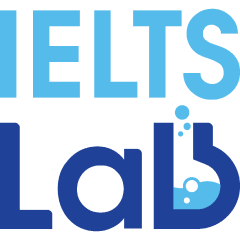
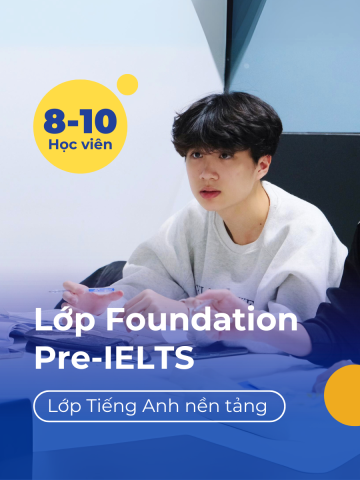
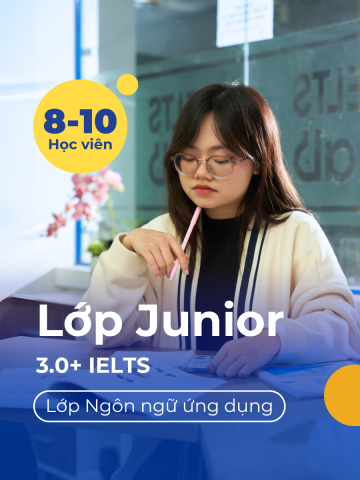



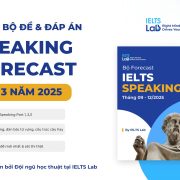
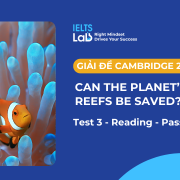
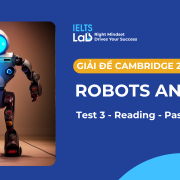

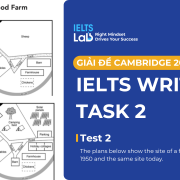



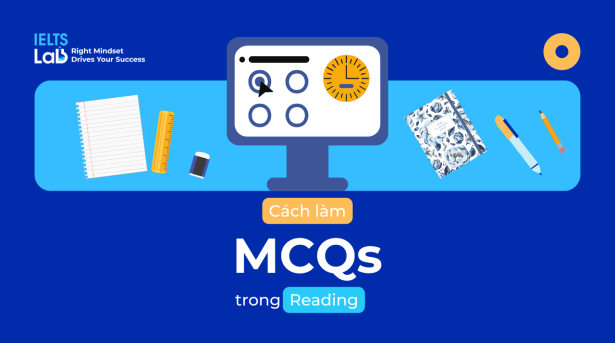



Trả lời